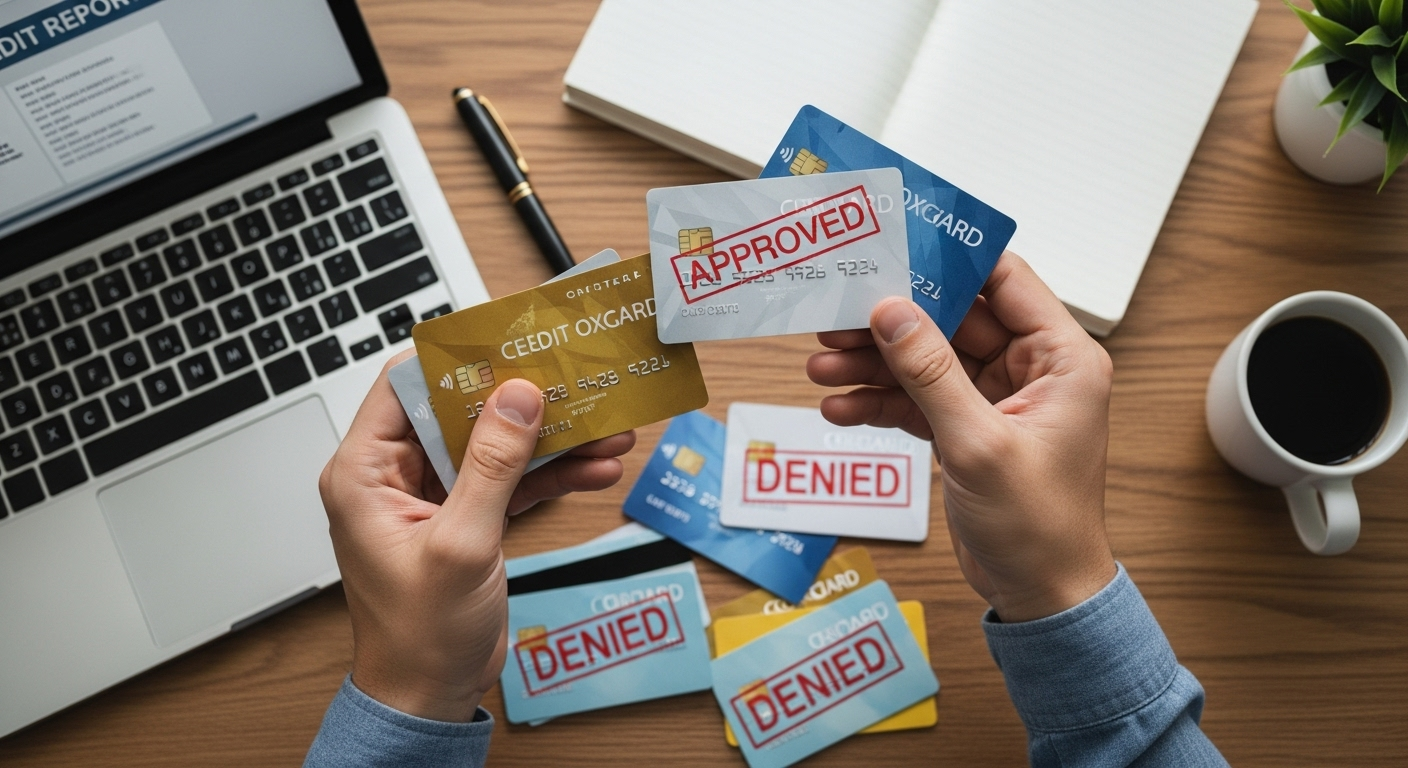Hi, I’m [Your Name], and I know the sinking feeling of seeing “Application Denied” on a credit card application. I’ve been there—multiple times. Each rejection stung, but it pushed me to uncover the credit card denial reasons behind my struggles. After months of research, trial, and error, I turned things around and got approved for a card that fit my needs. In this article, I’ll share my journey, the top reasons why credit card applications get denied, and the exact steps I took to boost my approval odds. Whether you’re battling a low credit score or just want to avoid common pitfalls, this guide will help you navigate the process with confidence.
My Journey: From Rejection to Approval
A few years ago, I applied for my first credit card, dreaming of cashback rewards and financial flexibility. But my inbox filled with rejection letters instead. I wondered, “Why do I keep getting declined for credit cards?” Frustrated but determined, I dove into my credit report, researched issuer policies, and made changes that transformed my financial profile. Here’s what I learned about why applications get denied and how to fix it.
Top Reasons Your Credit Card Application Gets Denied
Through my experience and hours of research, I identified the most common reasons credit card issuers reject applications. If you’re facing denials, one or more of these might apply to you:
1. Low Credit Score
Your credit score is the gatekeeper to credit card approval. Most cards, especially those with perks like travel rewards, require a FICO score of 670 or higher (“good” credit). When I first applied, my score was 540, which screamed “high risk” to issuers.
- Why It Matters: A low score often reflects late payments, high debt, or a short credit history, making issuers wary.
- What I Did: I used free tools like Credit Karma to monitor my score and checked my credit report for errors at
2. Insufficient or Unstable Income
Issuers want to know you can repay what you borrow. As a freelancer with inconsistent income, I struggled to meet minimum income requirements for some cards.
- Why It Matters: Low or unstable income raises red flags, especially if your debt-to-income (DTI) ratio is high (above 43%).
- What I Did: I documented all income sources, including side gigs, and waited until my income stabilized before reapplying.
3. High Debt-to-Income Ratio
Even with decent income, carrying too much debt can lead to denial. My student loans and car payments pushed my DTI to 48%, which was a dealbreaker for issuers.
- Why It Matters: A high DTI suggests you might struggle to manage new credit card payments.
- What I Did: I prioritized paying down high-interest debt to lower my DTI to under 30%.
4. Too Many Recent Applications
In my desperation to get approved, I applied for five cards in two months. Each application triggered a hard inquiry, which dinged my credit score and made me look risky to lenders.
- Why It Matters: Multiple hard inquiries in a short period signal financial distress.
- What I Did: I spaced out applications, waiting at least six months to minimize the impact of inquiries.
5. Incomplete or Inaccurate Applications
Early on, I rushed through applications, leaving out details like my full income or employment history. This led to automatic denials.
- Why It Matters: Issuers need complete, accurate information to evaluate your eligibility.
- What I Did: I double-checked every field and ensured my application matched my credit report data.
6. Limited or No Credit History
With little credit history, I was a blank slate to issuers, which made them hesitant to approve me. This is common for young adults or those new to credit.
- Why It Matters: Without a track record, issuers can’t assess your reliability.
- What I Did: I started with a secured credit card to build a positive credit history.
How I Boosted My Chances of Approval
After pinpointing why I was being denied, I took actionable steps to strengthen my financial profile. Here’s what worked for me:
1. Check and Repair Your Credit
I found an error—an old medical bill marked unpaid—and disputed it, which raised my score by 20 points. To further improve my score, I:
- Paid all bills on time, as payment history accounts for 35% of your FICO score.
- Kept my credit utilization below 30% (30% of your score) by paying down balances.
- Avoided closing old accounts to maintain a longer credit history (15% of your score).
Pro Tip: If your score is below 600, focus on credit repair for 3–6 months before applying.
2. Start with a Secured Credit Card
Since my credit score wasn’t strong enough for unsecured cards, I got a Discover it® Secured Credit Card. I put down a $300 deposit, used the card for small purchases, and paid the balance in full each month. Within seven months, my score jumped to 620, and I qualified for an unsecured card.
- Why It Works: Secured cards report to credit bureaus, helping you build credit.
- Recommendation: Choose a secured card with no annual fee and a clear upgrade path, like Discover or Capital One.
3. Lower Your Debt-to-Income Ratio
I created a budget using a free app like Mint and tackled my debt with the snowball method, paying off smaller balances first. This reduced my DTI from 48% to 28%, making me a stronger candidate.
- How to Do It: List all debts, prioritize high-interest ones, and allocate extra funds to pay them down faster.
4. Avoid Application Mistakes
I learned to slow down and research. Before applying, I:
- Verified all personal details, including income and employment history.
- Checked card eligibility criteria (e.g., minimum credit score or income).
- Applied for one card at a time to avoid multiple hard inquiries.
5. Target Cards That Match Your Credit Profile
Not all cards are for everyone. I stopped chasing premium rewards cards and applied for the Capital One Platinum, designed for fair credit (scores 580–669). This increased my approval odds.
- Action Step: Use pre-qualification tools on issuer websites (e.g., Capital One, Discover) to check your eligibility without impacting your score.
6. Learn from Denial Letters
Each denial letter I received included specific reasons, like “too many inquiries” or “insufficient income.” I used this feedback to address issues before reapplying.
- How to Do It: If the letter isn’t clear, call the issuer’s customer service. The Fair Credit Reporting Act requires them to explain.
Alternative Options for Those Still Denied
If you’re still facing denials, don’t give up. Here are options I explored:
- Become an Authorized User: I asked my sister, who has excellent credit, to add me as an authorized user on her card. Her positive payment history boosted my score.
- Credit Builder Loans: I considered a credit builder loan from a local credit union, which helped me establish a payment history.
- Pre-Qualification Tools: Tools like Discover’s pre-qualification checker let me see my approval odds without a hard inquiry.
My Final Tips for Credit Card Success
After months of effort, I finally got approved for a card that suited my needs. Here’s my advice to avoid the frustration I faced:
- Be Patient: Credit repair takes time. Don’t apply for multiple cards at once.
- Research Cards: Target cards for your credit level (bad, fair, or good).
- Track Progress: Use free tools like Experian or Credit Karma to monitor your score.
Why You Can Trust My Advice
I’m not a financial guru, but I’ve navigated the credit card denial process firsthand. I’ve spent countless hours researching credit scores, issuer policies, and credit-building strategies, improving my score from 540 to 660. My advice comes from real-world experience, backed by reputable sources like the Consumer Financial Protection Bureau and major credit bureaus.

